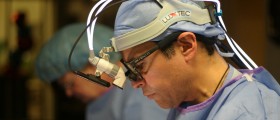
Bloodless Medicine Characteristics
In recent years, more and more people are interested into this, relatively now approach in surgery and medicine in general. Due to its effectiveness, and all the other qualities, the number of hospitals offering these kinds of services is increasing. Several decades ago, bloodless medicine and surgery was almost nowhere to be found. However, with the development of medicine come various innovations. Thus, today, many people are able to choose these methods for their treatment, ensuring that the hospital they choose provides them beforehand.
Why Bloodless Medicine?
Firstly, it depends on the person choosing the hospital adequate for his or her treatment. Namely, some religious groups like the Jehovah's witnesses, believe that taking other people's blood is against their religious principles. Therefore, people belonging to these groups are likely to choose bloodless medicine for solving their medical problems. Additionally, numerous people fear contracting infections or some kind of a disease through receiving blood in the hospital. Many times in history, this has been the case and many different people contracted HIV, malaria, hepatitis and various other diseases, all by taking blood. Unwilling to ignore these chances, people choose bloodless medicine and surgery, knowing that these approaches nullify these risks. Finally, there is always a chance that a mistake might be made in the hospital, causing you to receive a wrong blood type, jeopardizing your life and well-being. This, and numerous other complications, all influence the increase of bloodless medicine supporters.
Nevertheless, as soon as you decide upon this method of treatment, make sure you investigate a bit and choose hospitals which are experienced with bloodless medicine. Alternatively, you might get some recommended by people who have already experienced this medicine. They can recommend you their hospitals, making it easy for you to choose the right ones.
The Principles Behind Bloodless Medicine
As the name itself suggests, this medical approach involves avoiding blood transfusion in all procedures. Thus, the patients treated this way have minimal blood taken for them in order to complete certain tests. Also, they are not given any foreign blood during their entire treatment. Rather, bloodless medicine is to make the patient capable of producing enough of his or her own blood, reduce the blood loss during surgery to a minimum and ensure a maximum oxygen availability during bloodless procedures. Often, so as to avoid making any mistakes, the patients wear markings signifying their refusal to take blood, and this is also noted in their charts.
















Your thoughts on this
Loading...